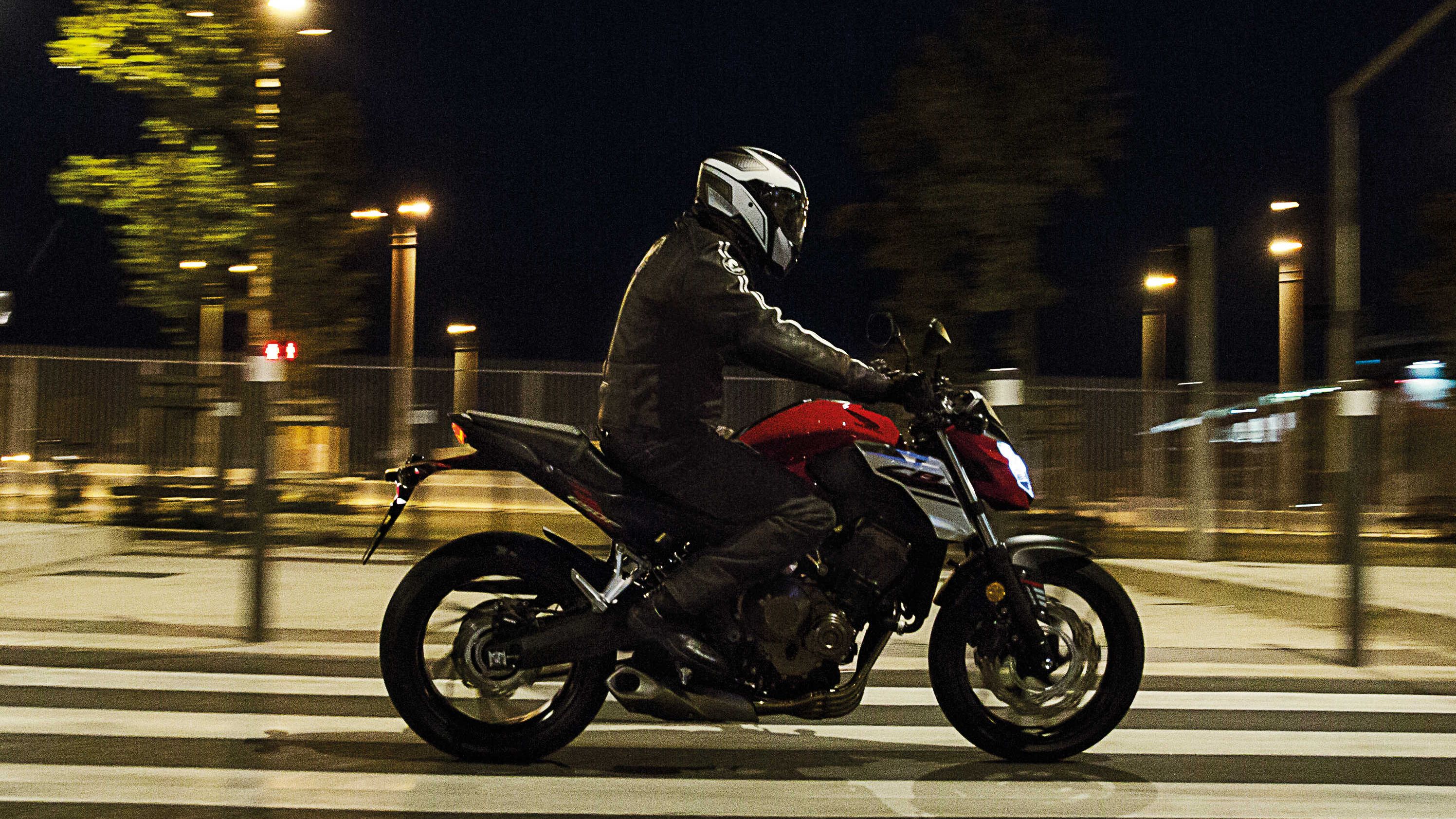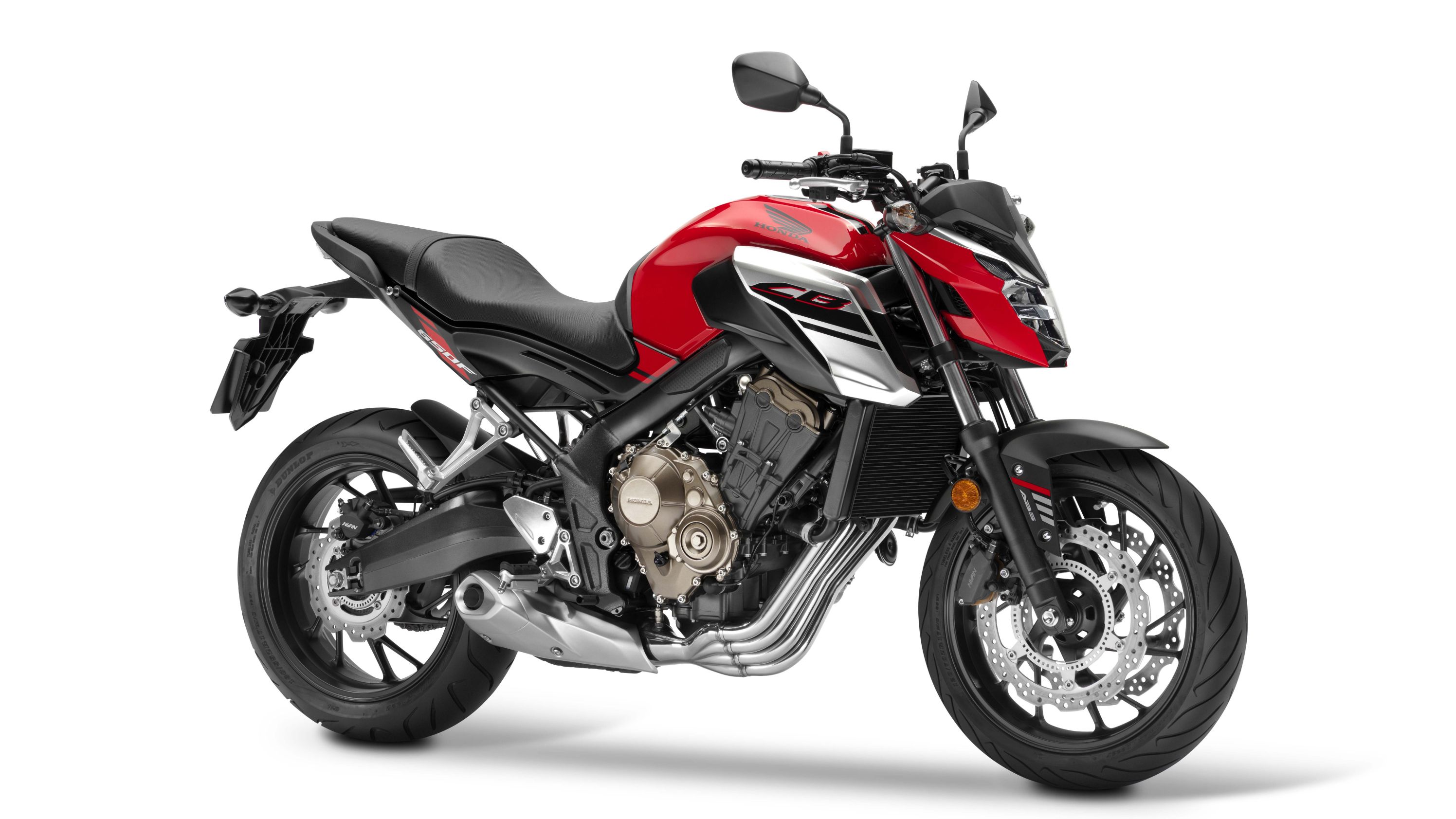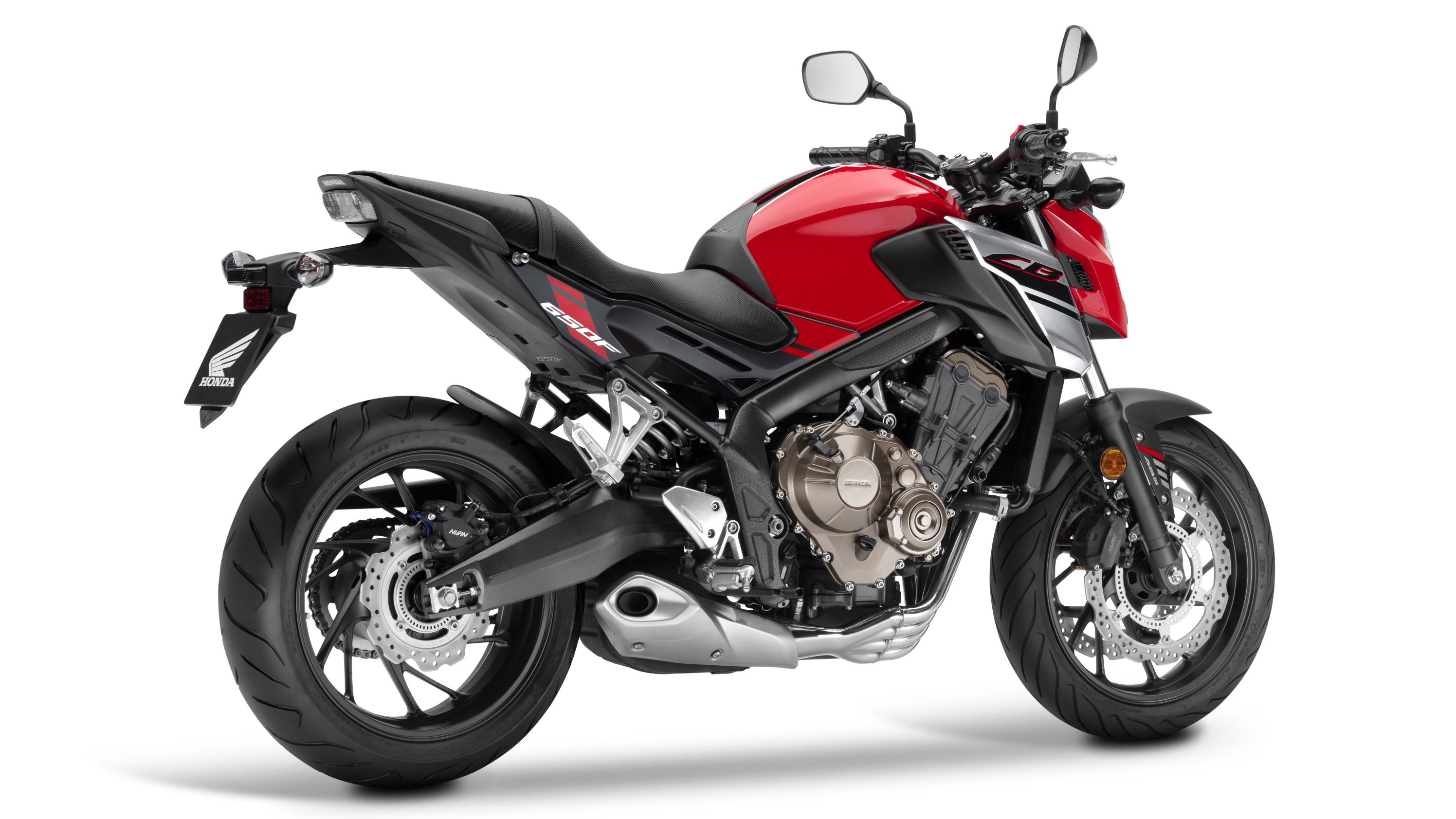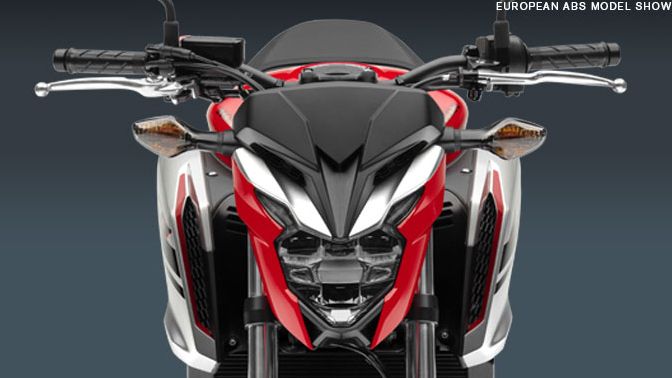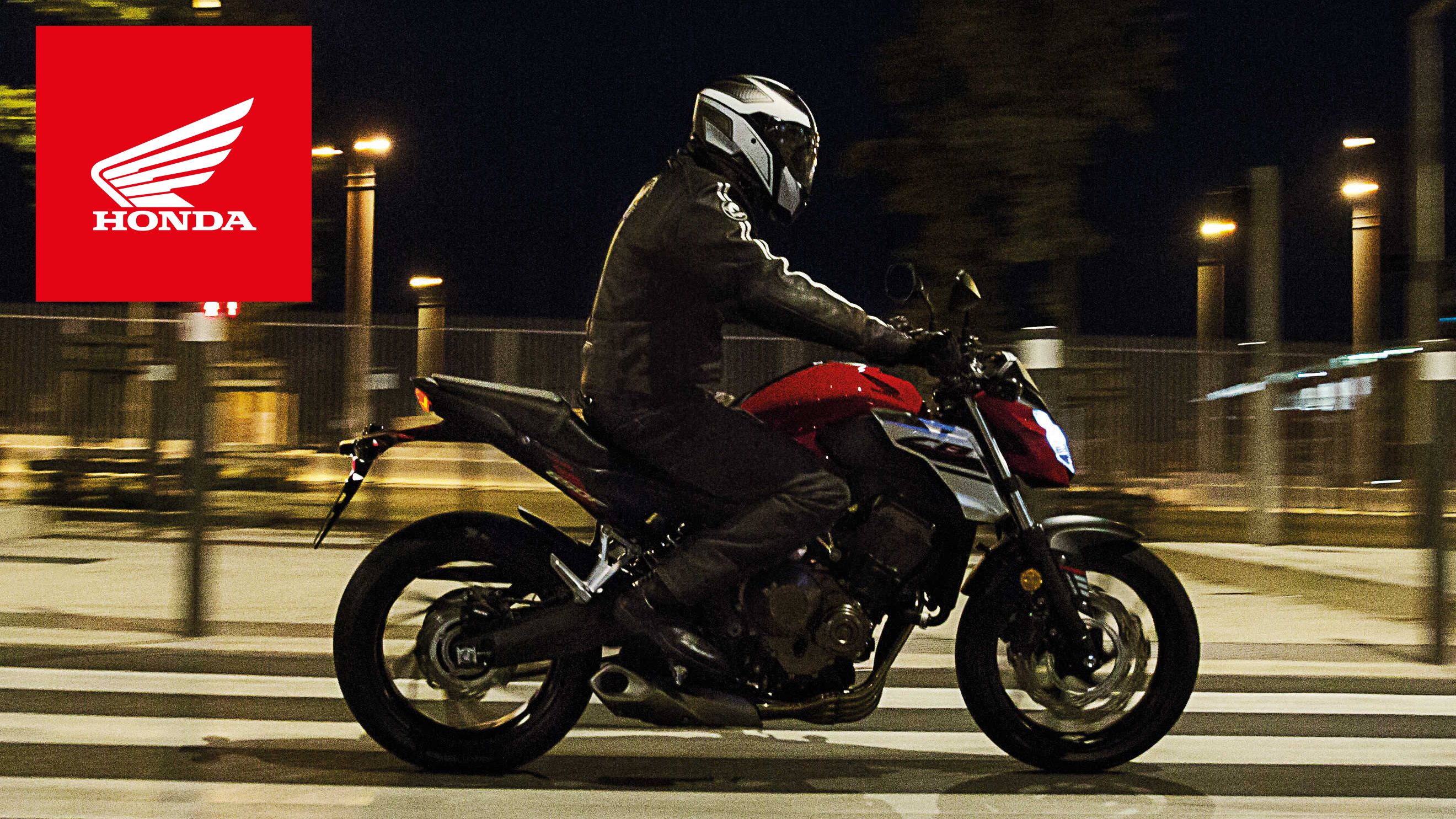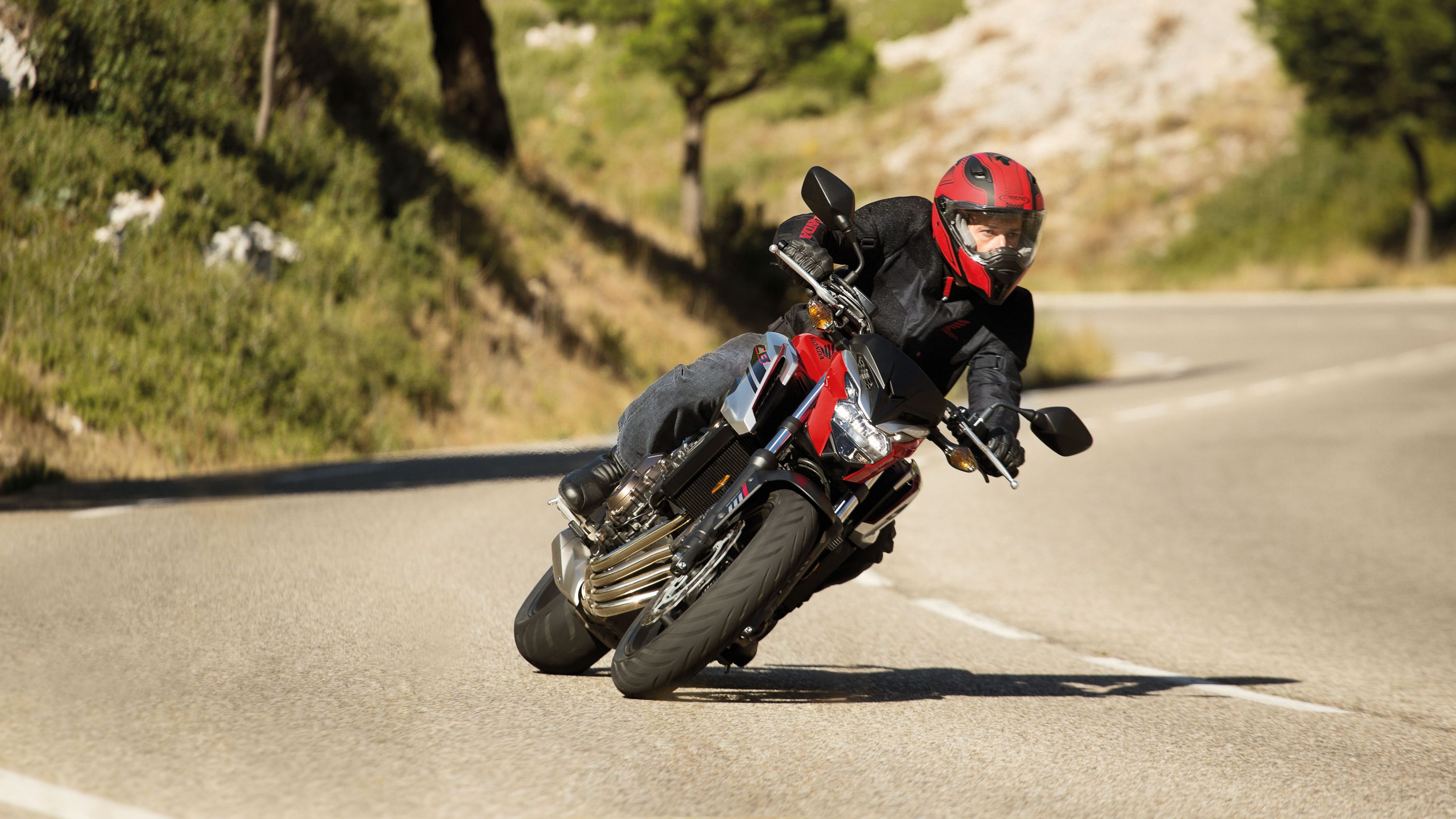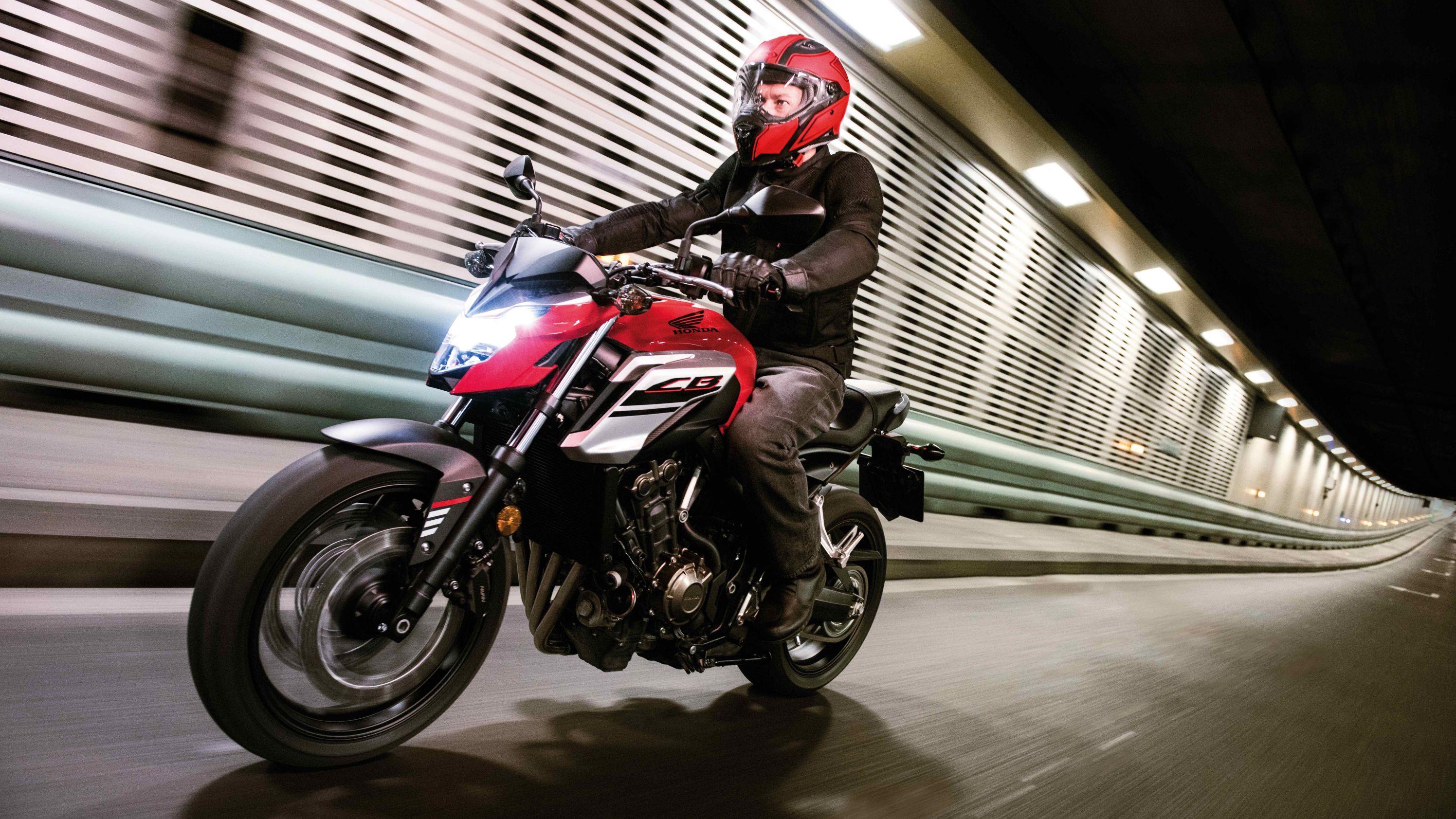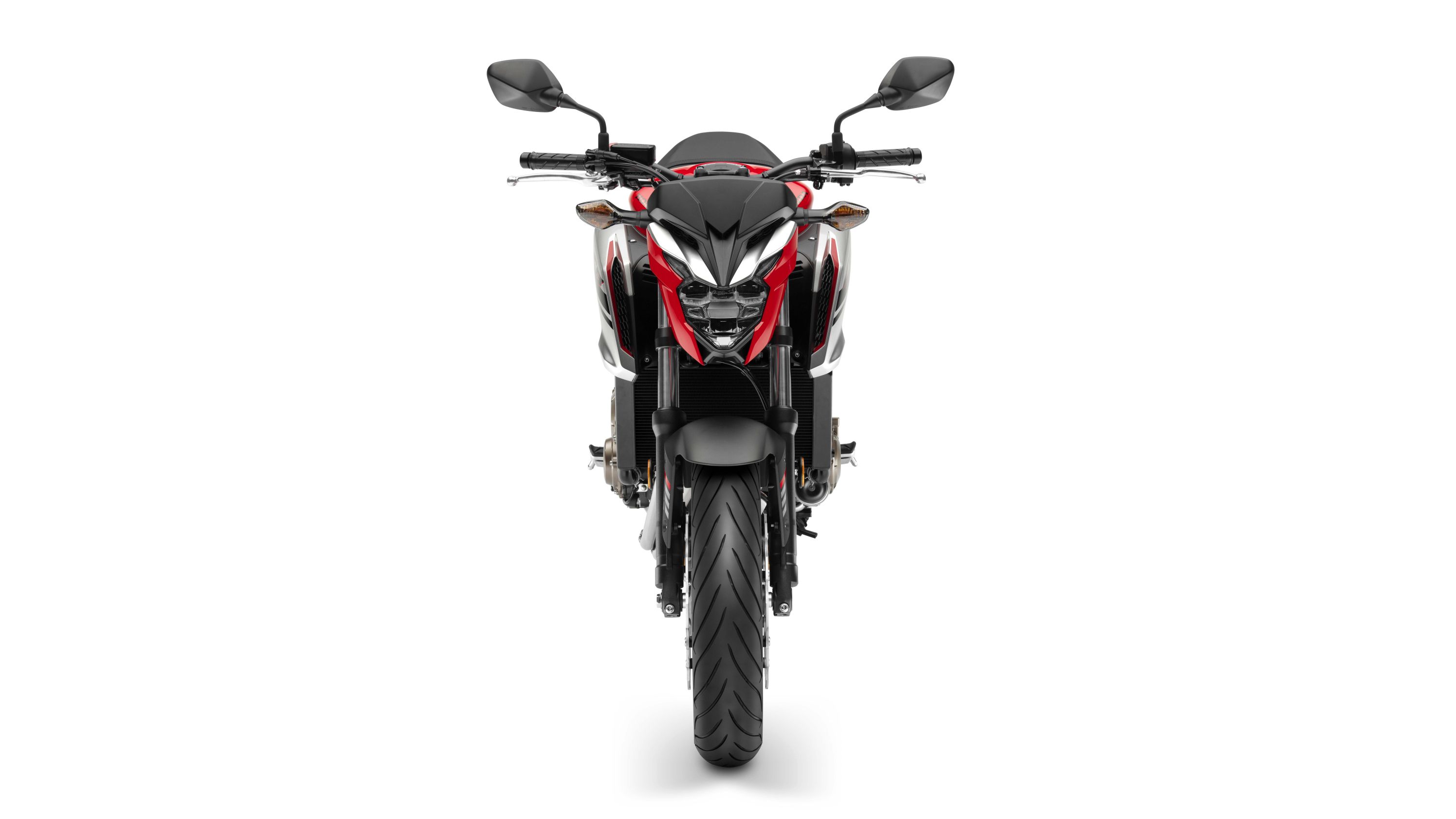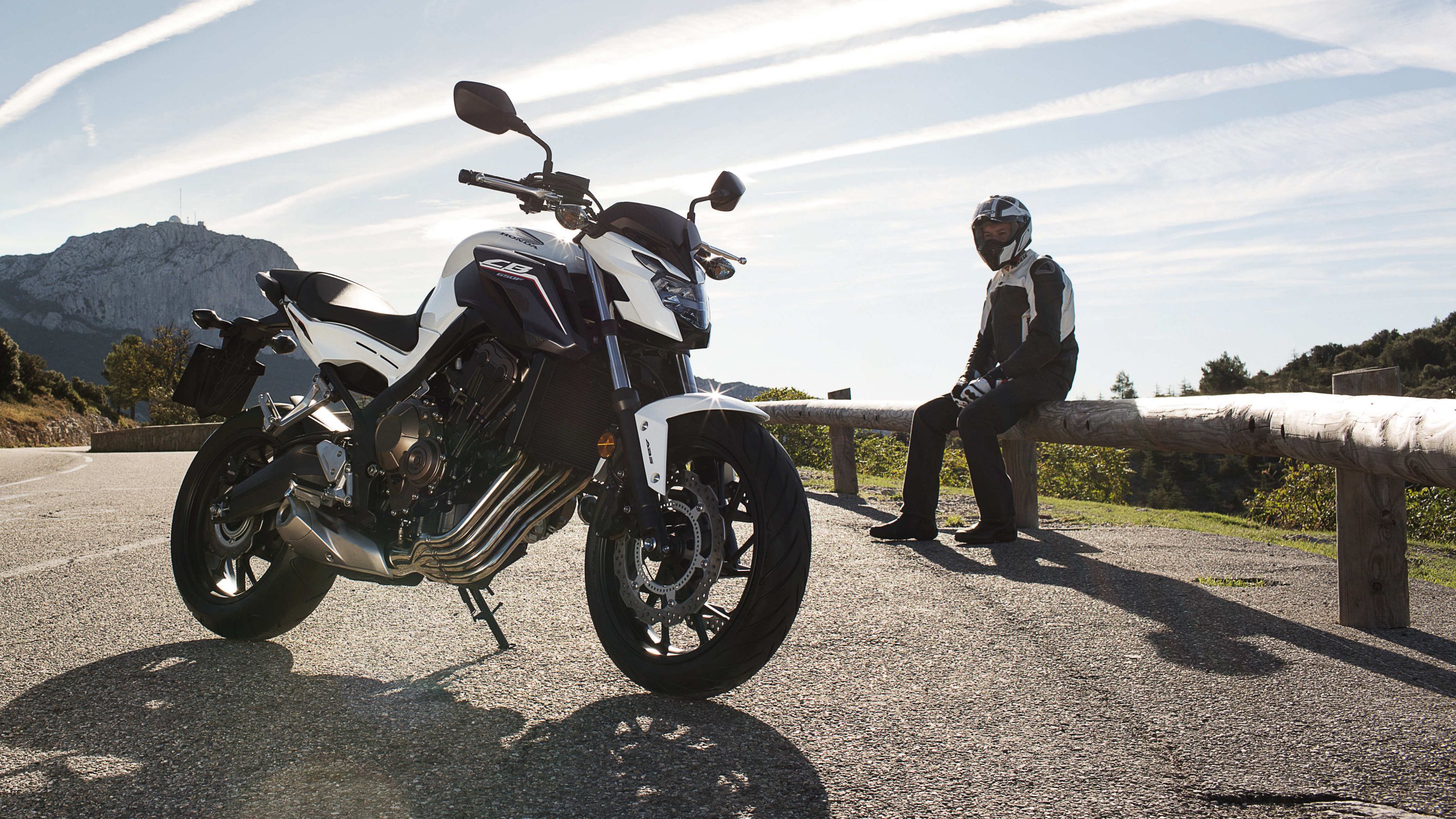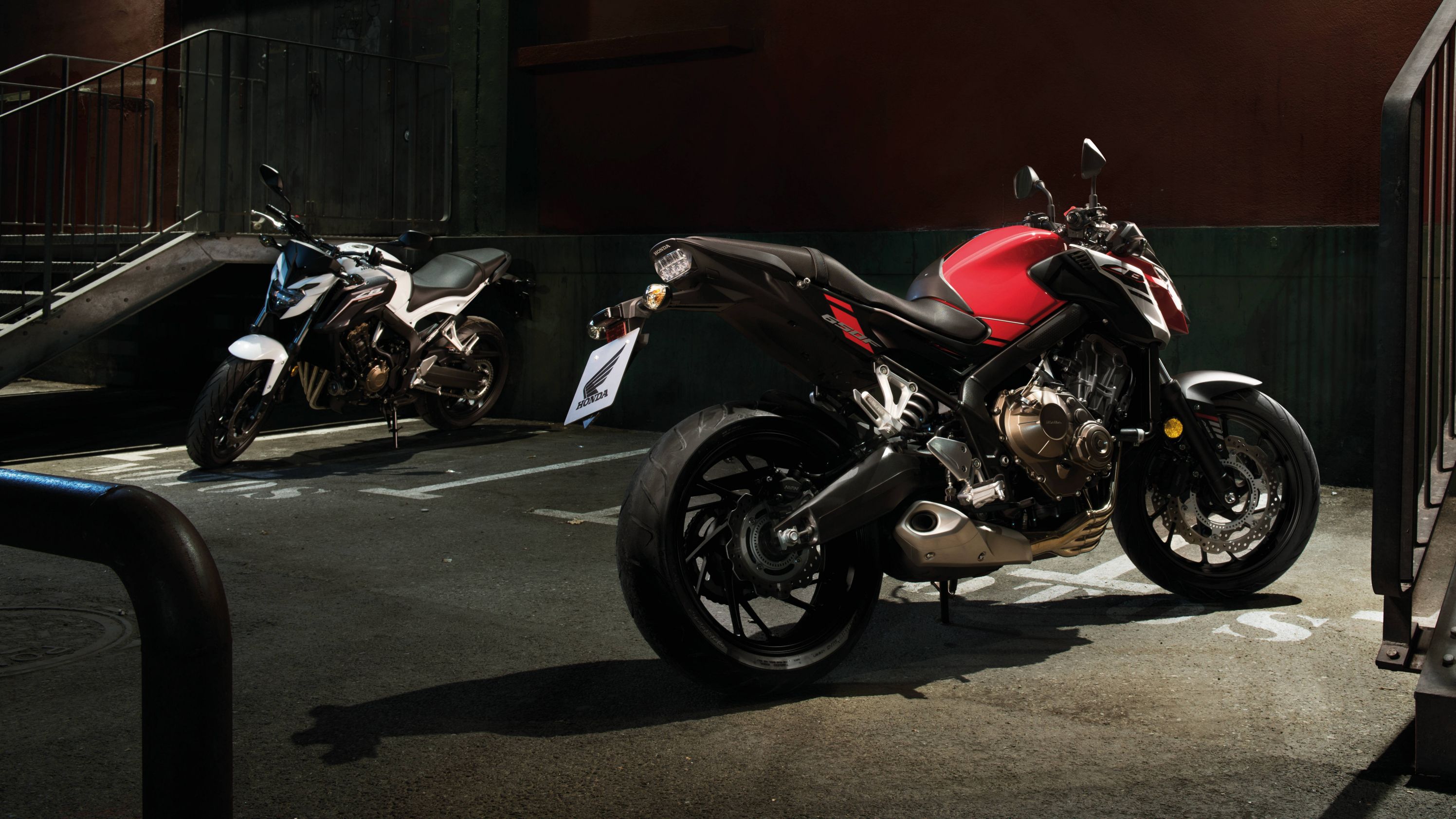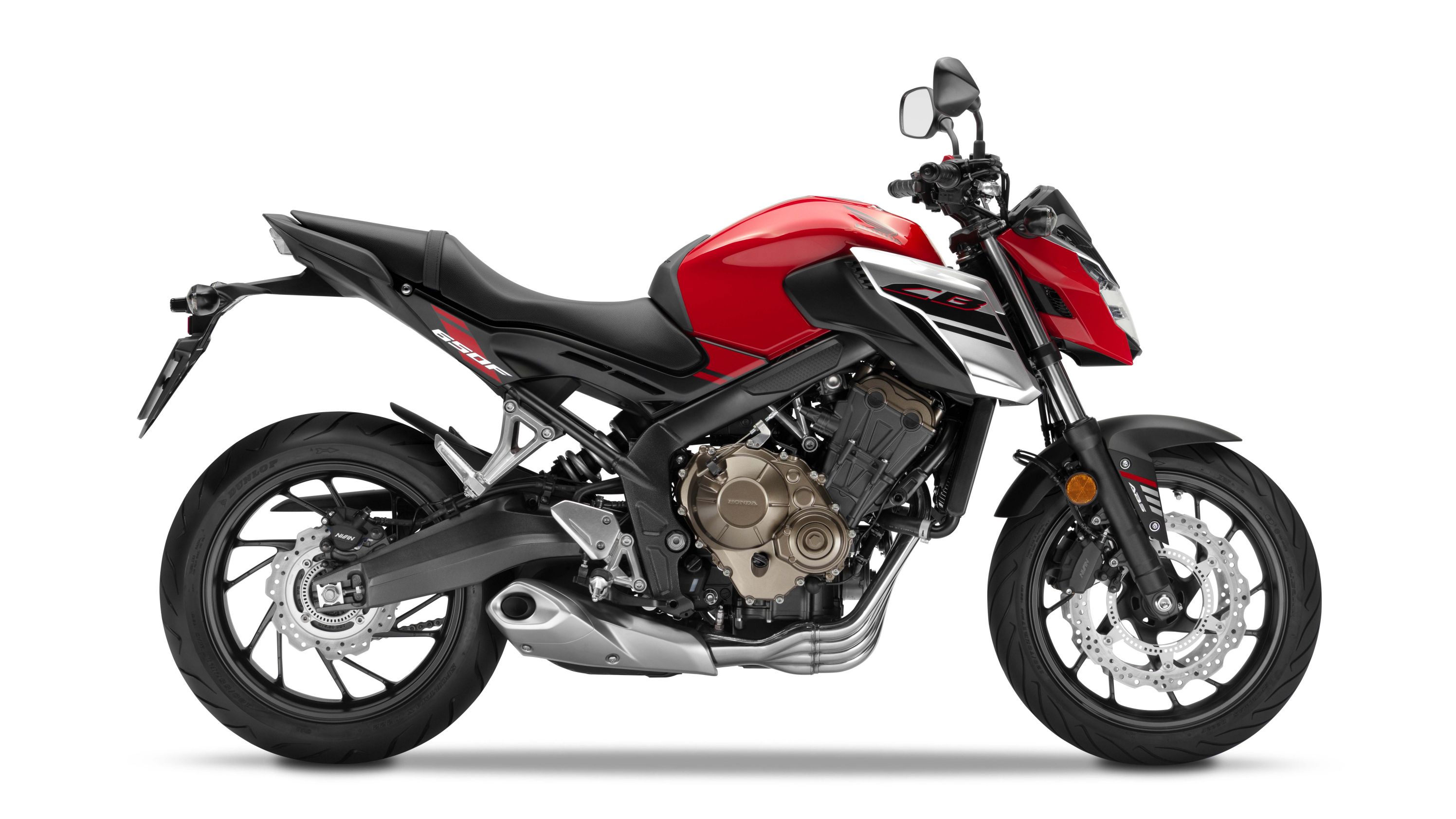Honda->ke291 is finally bringing the CB->ke2813650F to the domestic market. European riders have been enjoying it for a few years now, but most Americans are unfamiliar with this ride. The torquey 649 cc engine puts this mid-range sportbike->ke631 into the fun range, and how can you go wrong with fun and fun in the same description? Naked bikes are sort of the modern, factory-made, sportbike equivalent of the old, home-grown bobbers->ke5325 that saw all non-essential equipment stripped away, and the remaining sheet metal pared down or otherwise lightened as much as possible. The CB650F fits right into this category. How does it stack up to the mid-range nakeds we already have on our shores? The Yamaha FZ-07->ke5663 and Suzuki SV->ke2109650 come to mind so let's put them side-by-side.
2018 Honda CB650F: How Does It Stack Up With The FZ-07 And SV650?
- Make: Array
- Model: 2018 Honda CB650F: How Does It Stack Up With The FZ-07 And SV650?
- Engine/Motor: inline-4
- [do not use] Vehicle Model: Array
Design
Naturally, these three rides share a general overall panache as members of the same category, but they are by no means cookie-cutter rides with plenty of aesthetic differences in spite of the dearth of body panels that would normally define the looks, or at least strongly influence them. Yamaha and Suzuki both favor a more abbreviated, cyclops headlight can that seems just big enough to contain everything. Honda, on the other hand, put a bit more into the project with a mini-cowl that comes complete with a bikini flyscreen that admittedly protects very little beyond the instruments tucked away just behind, but makes for a more substantial-looking front end. To be honest, I find most naked-bike headlights to be a little ugly, even comical-looking due to the whole Transformer thing, but I concede that it might actually be a selling point for some buyers.
All three carry minimal front fenders nestled between blackout fork sliders for a strong connection to the garage-custom world. Honda alone uses the cheek fairings for a bit of bling with a splash of silver paint that sets them apart from their surrounds while Yamaha opts for a more subtle blackout and Suzuki keeps that area clean with no cheeks at all.
The fuel tanks are slightly different as usual, and in this case Yammy is the one showing up with the ugly date with an unusual shape that incorporates a sharpish angle that just ruins the smooth curves for me. All three are also fairly comfortable to ride in general, but at the end of the day these are mid-sized rides that are going to fit the smaller crowd better than the big-and-tall shoppers. Specifically; the FZ-07 footpegs are in a bad spot and interfere with your legs when you deploy your training wheels, and the saddle is a little uncomfortable. The SV650 is just plain cramped overall with bars that kinda feel like they are in your lap. Honda's model is really no bigger than the other two, but it doesn't seem suffer from these little issues.
Chassis
Naked bikes frequently show quite a bit of their frame due to a lack of body paneling, and the bones themselves become part of the look. Honda's twin-spar supports are plainly visible, as are the SV650's Trellis members though the blackout treatment does make them rather inconspicuous against the similarly darkened engine. Yamaha alone goes with a mostly hidden skeleton, and it too is black-on-black for minimal visual impact.
Non-adjustable, 41 mm, right-way-up shocks are constants across the board though Honda's decision to run Showa's Dual Bending Valve Forks compensates for that somewhat with demand-based damping action. All three run with adjustable preload on the rear shock with no other tweaks available. This really shouldn't be a surprise given the price bracket, and there's always the aftermarket if you've got to have that tuneable support.
Symmetrical, 17-inch cast rims are used exclusively to mount the hoops. Honda takes the cake when it comes to the brakes. A pair of 320 mm discs work to slow the front wheel, while Suzuki runs a pair of 290 mm discs and Yamaha comes in smallest with 282 mm discs. All three have ABS available, so that's a wash.
Overall, all three handle nicely, and their lightness and compact nature makes for easy maneuvering. I'd call each of them fun to ride even if they feel a little squirrely compared to my Sporty for instance. Sure, what I call “squirrely” some might consider “very responsive,” but there it is. I would offer that one of the reasons for buying a naked is the raw connection to the machine and the purity of the feedback and feel, so the sensitivity probably won't be viewed as a bad thing by most.
Drivetrain
The SV650 and FZ-07 both run twin-cylinder mills whereas the CB650F doubles down with a four-cylinder plant. Suzuki's 645 cc, 90-degree V-twin produces 74.9 horsepower and 47 pound-feet of torque while the 689 cc FZ's parallel-twin manages about the same with an even 74 ponies and 50 pounds. Honda's four-banger falls in between in displacement at 649 cc. Typically, the smaller but more-numerous pistons develop more horsepower than do the twins; to the tune of 89 ponies total.
Now I realize that in the grand scheme of things, none of these are real powerhouses by any stretch of the imagination, but they aren't supposed to be. Mid-size nakeds are by and large meant for the upper-end entry level, experienced commuters and budget riders. They aren't for the fiery-eyed pegdraggers, drag racers and such like, though there is definitely fun to be had pushing the envelope in a less powerful machine, and it's the cornering and carving that provides most of the entertainment value so brute power is really just a vanity at the end of the day. In short, while Honda comes out on top in power, I'd have to say that's probably the least important category with this bunch, thus making it a somewhat shallow victory.
Price
Honda has yet to announce its North American MSRP, but based on European prices, I think we can expect it to fall around the $8,500 mark. That's a bit prouder than both the others with Yamaha landing in the middle at $7,199 and the Suzuki down in the bargain bin at $6,999 (unless you want ABS, then it's right there with Yammi). That's a significant difference for bikes below the 10K mark, and I gotta say that Honda's name power isn't enough to cover that discrepancy in a head-to-head against other members of the Big Four; even if the Red Riders are the most popular brand with millennial which is the generation most likely to be looking at an entry-level ride that won't be outgrown too quickly.
Come August this year, Americans will be able to get their hands on this ride and experience what our European and British brothers and sisters have been going on about since 2014. I hope this gives you some insight, but some things have to be felt to be appreciated, so we'll see and feel all soon enough.
Specifications
|
ENGINE: |
|
|
Type: |
649cc liquid-cooled inline four-cylinder four-stroke |
|
Valve Train: |
DOHC; 4 valves per cylinder |
|
Bore x Stroke: |
67.0mm x 46.0mm |
|
Compression Ratio: |
11.4:1 |
|
Induction: |
Fuel injection; 32mm bore |
|
Ignition: |
Full transistorized |
|
Starter: |
Electric |
|
Driveline: |
Chain final drive; 15T/42T |
|
Transmission: |
Manual 6-speed |
|
Clutch: |
Multiplate wet |
|
SUSPENSION: |
|
|
Front: |
41mm conventional Showa Dual Bending Valve telescopic fork; 4.25 in. travel |
|
Rear: |
Single shock; 5.04 in. travel |
|
BRAKES: |
|
|
Front: |
Dual 320mm hydraulic discs in wave pattern w/ two-piston Nissin calipers (ABS: w/ ABS) |
|
Rear: |
Single 240mm hydraulic disc in wave pattern w/ single-piston Nissin caliper (ABS: w/ ABS) |
|
TIRES: |
|
|
Front: |
120/70-17 |
|
Rear: |
180/55-17 |
|
MEASUREMENTS: |
|
|
Rake (castor angle): |
25º 30' |
|
Trail: |
101mm (3.98 in.) |
|
Length: |
83.1 in. |
|
Width: |
29.7 in. |
|
Height: |
42.3 in. |
|
Seat Height: |
31.9 in. |
|
Ground Clearance: |
5.9 in. |
|
Wheelbase: |
57.1 in. |
|
Fuel Capacity: |
4.6 gal. |
|
Curb Weight*: |
454.2 lbs. (ABS:458.6 lbs.) |
|
DETAILS: |
|
|
Color: |
Red |
|
Price: |
TBD |

